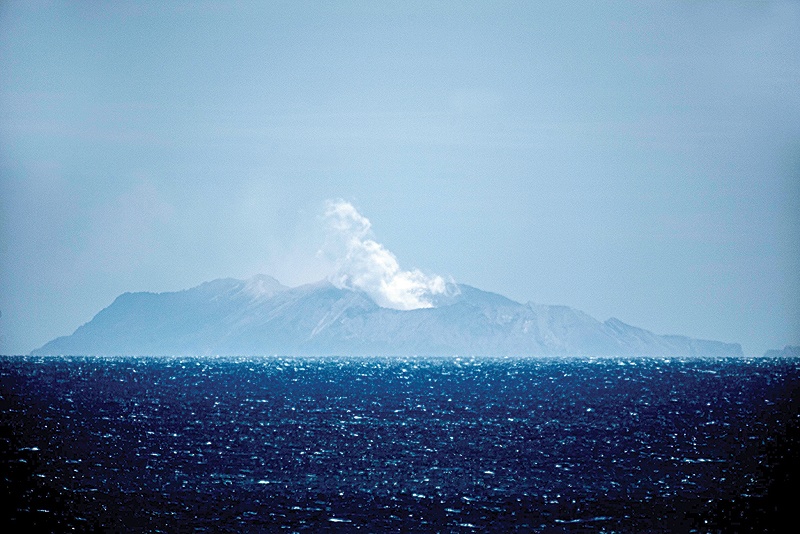Risk too high for recovery of bodies
WHAKATANE: Increasing tremors on a volcanic island in New Zealand yesterday heightened the risk of another massive eruption, preventing the recovery of bodies two days after an eruption engulfed dozens of tourists in steam and hot ash. Six people were killed in Monday's explosion at White Island, which lies some 50 km off the mainland, with another nine officially listed as missing, and 30 injured.
Australian Gavin Dallow, 53, and his stepdaughter Zoe Hosking, 15, were the latest victims to be identified yesterday. "Our hearts break at the loss of Zoe at such a young age," the Dallow family said in an emailed statement. "We mourn the loss of Gavin and Zoe." And the death toll could rise with 29 people in intensive care in several hospitals around the country.
Twenty seven people have horrific burns to 30% or more of their body and 22 are also on airway support due to the severity of their burns, said medical authorities. "We anticipate we will require an additional 1.2 million square centimeters of skin for the ongoing needs of the patients," Counties Manukau Chief Medical Officer, Dr Peter Watson, said at Middlemore Hospital in Auckland.
"The nature of the burns suffered is complicated by the gases and chemicals in the eruption. This has necessitated more rapid treatment of these burns than is the case for thermal-only burns," said Watson. Surgical teams were engaged in around-the-clock treatment. "This is just the start of a very long process that for some patients will last several months," he said. The Australian government said it expected to transfer up to 10 injured citizens from New Zealand starting in the next 24 hours, if medical staff approve them for travel.
Too risky to recover bodies
Authorities monitoring the uninhabited island said conditions were worsening and there was now a 40-60% chance of a massive eruption similar to Monday in the next 24 hours. "In summary, yesterday there was a high risk of an eruption. Today there is an even higher risk of an eruption. And the parameters are worsening at the moment," Graham Leonard, a senior volcanologist at GNS Science, told a news conference in Wellington.
A plume of smoke could still be seen coming from the island. "I've spoken to many of those involved in the operation and they are very, very eager to get back there, they want to bring people's loved ones home," New Zealand Prime Minister Jacinda Ardern said in an interview with Reuters in Wellington. Aerial surveillance has detected no signs of life on the island, where at least one tour group was captured on automated webcams in the crater just a minute before the eruption.
Police said the safety of recovery teams was the priority and are awaiting advice from experts on when they could access the island. That has prompted some criticism authorities are being too cautious. "We cannot put other people in jeopardy to go out there until we're absolutely certain that the island is actually safe," Acting Assistant Commissioner Bruce Bird told a media conference in Whakatane, the town that is an access point for tourist trips to the island.
There were 47 people on White Island at the time of the eruption. Twenty-four of those were from Australia, nine from the United States, five from New Zealand, four from Germany, two each from China and Britain and one from Malaysia. A mother and daughter were the first Australians to be named as victims, media said yesterday. Brisbane woman Julie Richards, 47, and her daughter Jessica, 20, had been confirmed dead, family friend John Mickel told Sky News.
The death toll from Monday's eruption rose to six after one victim died in hospital on Tuesday. Daily tours bring more than 10,000 visitors to the privately owned island every year, marketed as "the world's most accessible active marine volcano". GeoNet raised the alert level for the volcano in November because of an increase in volcanic activity. The alert level was increased further after the eruption, and remains elevated.- Reuters










